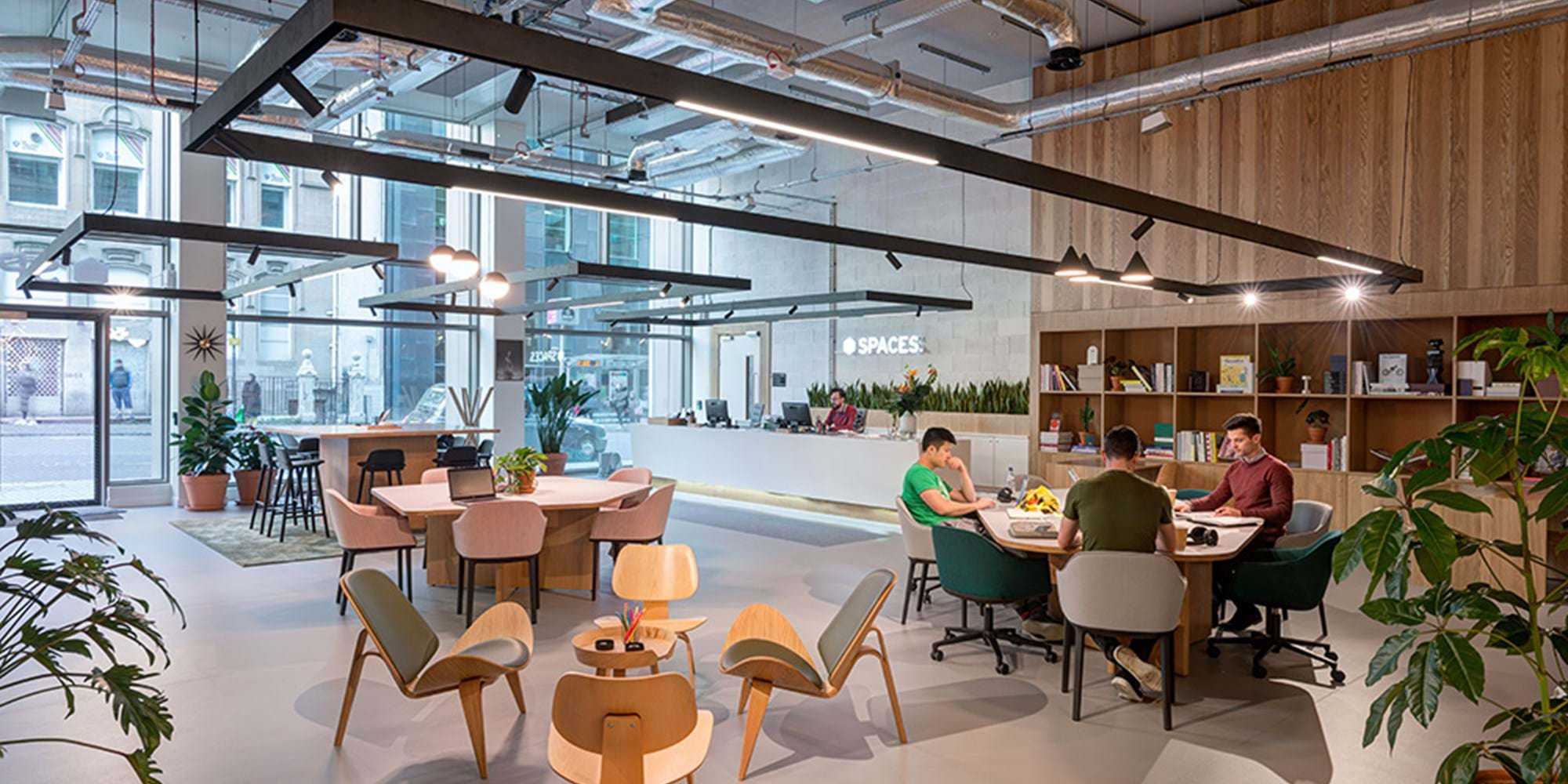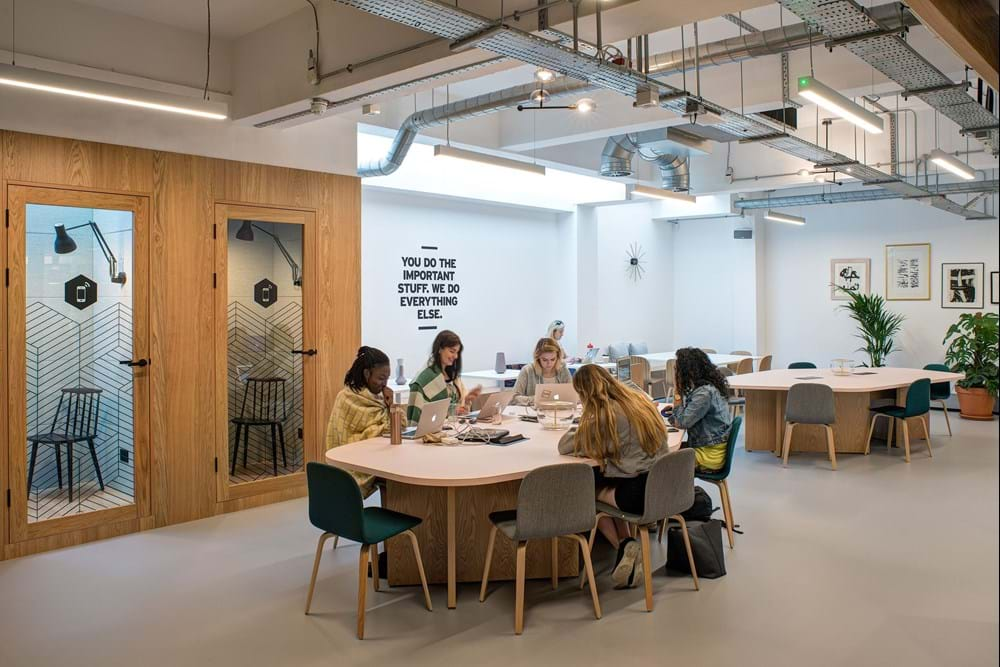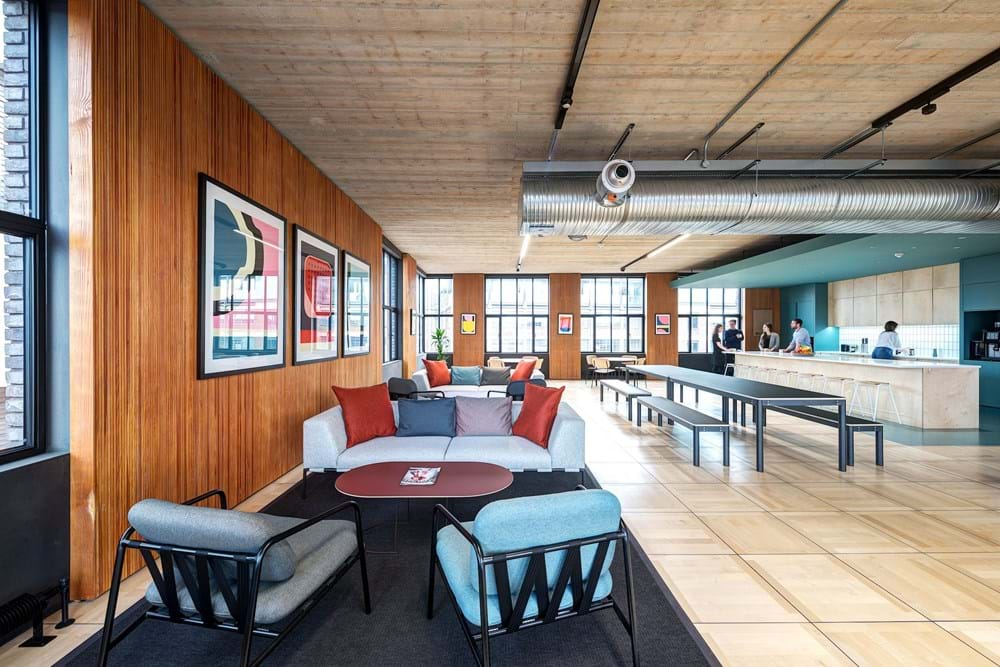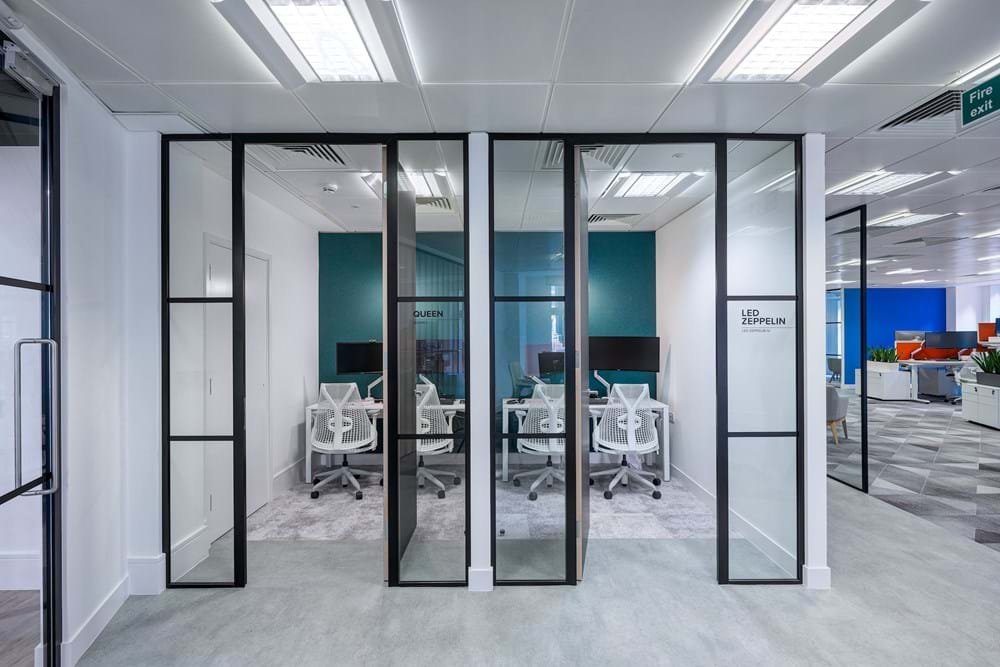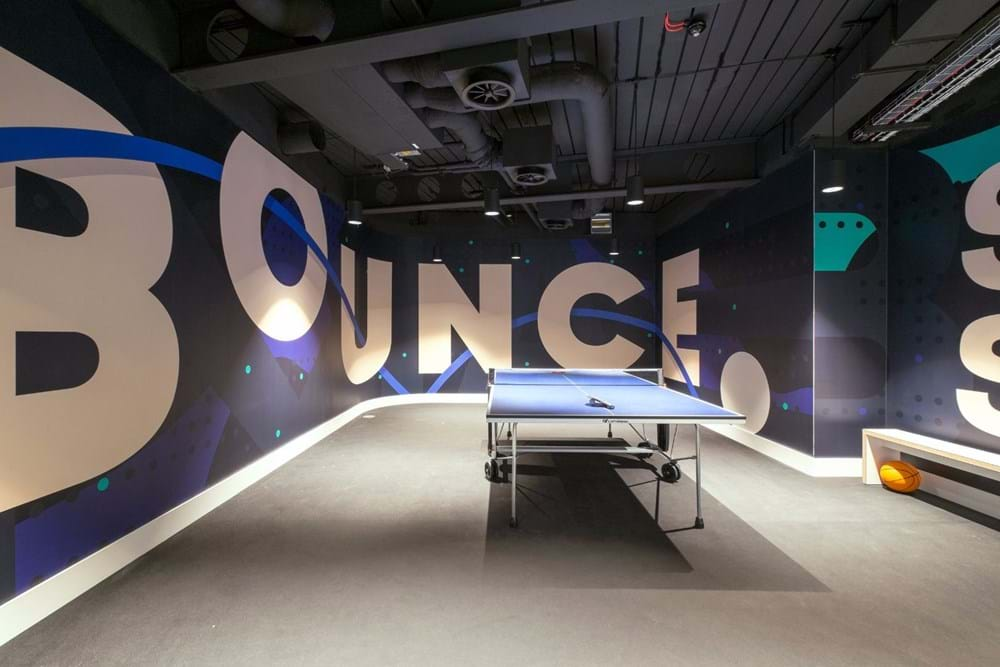Five must-have workplace zones to achieve optimal productivity
Offices have transformed markedly in the last decade, as have the demands of employees – so what are the essential areas successful businesses must have?
In the last decade, trendsetting technology titans such as Apple, Facebook, Amazon and Google have redrafted the blueprint of how the modern workplace should look and feel. Following their lead, modern offices create spaces that are inspirational, encourage collaboration, and give employees all the tools to spark innovation.
The exponential rise of smartphones, laptops, tablets and other connected devices has accelerated the departure from the traditional office environment.
A collaboration zone at Spaces co-working offices
Traditionally, offices haven’t created ‘zones’; they had offices, kitchens, and maybe a reception space. Now we are seeing a rise in breakout zones – some energetic and loud, some quiet and tranquil.
These zones are spaces that “support the five work modes: focus, collaborate, learn, socialise and rejuvenate”, according to Zoe Humphries, a Senior Workplace Consultant at Steelcase, a global market leader when it comes to office furniture. Below are the five must-have workplace zones to achieve a successful business culture as well as optimize workplace happiness and productivity.
Social zone
Taking inspiration from the big-tech companies, the poster boys of this workplace evolution, eating and drinking together is excellent for encouraging collaboration and innovation and improving workplace happiness and productivity. It creates a social glue, humanising the atmosphere at work and strengthens the bond between people.
A well-thought-out dining area, for example, will help employees chew over various topics. Margie Dimech, Employee Engagement Consultant at Radley Yeldar, says: “From putting the milk at the furthest point away from the supermarket check-out, to exiting via the gift shop, our physical environment is often designed to manipulate our behaviour. And these behavioural nudges can be used in office design too. If you want to break down silos, provide a shared casual space, like a refectory, to increase incidental social interaction.”
A meeting zone at Joseph Joseph
Meetings zone
One major workplace trend is the requirement for meeting spaces better suited to smaller and more ad hoc gatherings. Given the rise of flexible (and remote) working, more dispersed teams have to find and book a suitable space at a moment’s notice when project demands bring about the need to collaborate.
The huddle rooms at Relativity
Therefore, “huddle rooms” are becoming increasingly popular, fulfilling the needs of dynamic workplace behaviour. These are smaller, less formal spaces compared to meeting rooms of a decade ago – and ideal for short-notice meetings for small teams, or those working remotely.

With proper soundproofing, these rooms serve a variety of uses, making them essential, states Eugen Miropolski, Managing Director in Europe and the Pacific of co-working leaders WeWork. “Whether it is due to the nature of a client account, or to hold a sensitive conversation at work, ensuring the office has a private zone is crucial,” he says.
Collaboration zone
No organisation can afford to pretend adopting a business-as-usual approach will be good enough to survive in the long or even short term, with market disruption looming. Therefore, providing the space and opportunity for innovation in the workplace is of paramount importance. Teamwork is a huge element of a successful business, so why not have a collaboration zone to encourage cross-pollination and to brainstorm concepts?
Notably, we are moving to a mobile-first work environment. This means that rather than tech being connected and installed in a specific room, devices can be picked up and moved around to wherever they are needed at the time.

Consider the boardrooms of the tech giants and you will notice a distinct lack of tech – certainly when it comes to computers – and even tables. At Google London, for instance, the boardroom looks more like the inside of a bedouin tent. There is an expectation that meeting attendees will adhere to a “bring-your-own” device attitude, and by sitting soft in these boardrooms and not around a rigid table, a relaxed atmosphere is generated that is more conducive to progress, agreement, and finding solutions.
Play zone
Sceptics may dismiss a pool table or dart board in the workplace as a gimmick – but that would be missing the bullseye. By introducing sport, and a play zone, it can tease out a healthy competitiveness – which has been proven to improve workplace productivity – and activate socialisation, both of which can trigger all-important innovation.
Pierre David, Human Resources Leader at sports-equipment retailers Decathlon in the United Kingdom, says: “Play zones – or ‘sport zones’ as we call them – are important for the health and wellbeing of our colleagues and also contributes to the social atmosphere in the office.”
The social zone at Skyscanner
Wellbeing zone
Employee wellbeing is not a fad; it’s here to stay, for the benefit of everyone – the individual and the collective. So it is vital to evolve the workplace, and a sprinkling of flora and fauna – in a wellbeing zone or across the office – is a good place to start, posits Andy Baxter, Managing Director of Internet Gardener. “When considering plants, greenery and the overall concept of biophilic design, the purpose is often creativity, wellbeing and general aesthetics,” he says.
“Various psychological studies have shown that adding houseplants to a work environment boosts employee performance. Other studies have shown that productivity increases by an average of 15 per cent across all staff members with the inclusion of some greenery.”

A wellbeing zone can be used for meditation, yoga, and so on. And it can extend to the stairwells, Margie Dimech from Radley Yeldar suggests. “If your health and wellbeing strategy is a priority,” she says, “increase footfall by making the stairs more enticing and accessible.”
Finally, Joe Gaunt, Founder and CEO of Hero, a digital wellness company, adds: “People are the most valuable asset in any organisation, therefore, investing in wellness and a health strategy is vital both ethically but also financially. Healthy, happy and highly engaged employees are, on average, up to 30 days more productive per annum and organisations promoting health and wellbeing are 3.5 times more likely to be creative and innovative as well as 21 per cent more productive.”
